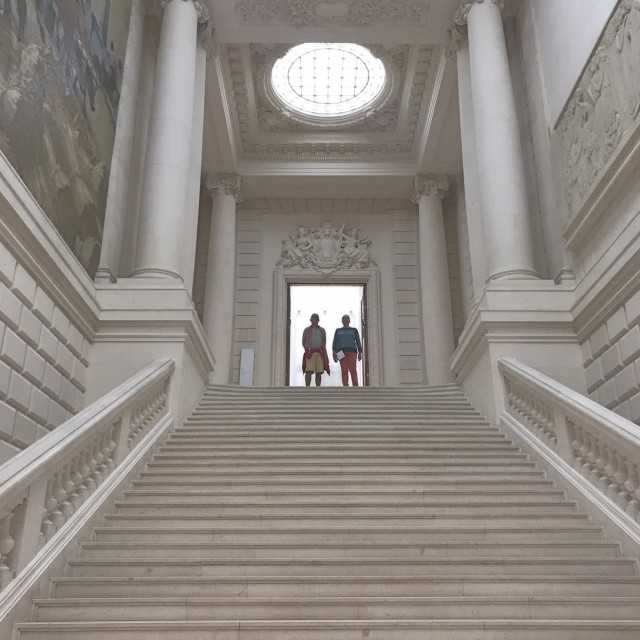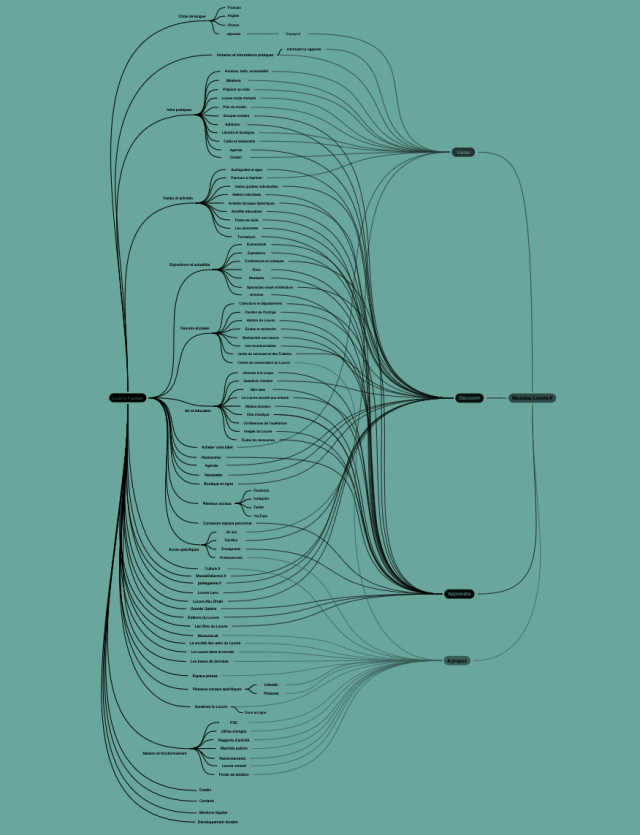insights
reciproque aims to make human creativity accessible to as many people as possible through digital technology


Not touching is prohibited
Not breaking is prohibited»
Julio le Parc, Enough mystifications, Groupe de Recherche d'Art Visuel, 1963
reciproque aims to make human creativity accessible to as many people as possible through cutting-edge digital technology.
We bring a unique perspective to every project which guides all our designers’ and consultants’ ideas. We continuously seeking new ideas to create both relevant and polite interfaces for accessing knowledge, culture and world heritage.
At reciproque, our company culture inspires all of our projects, from their inception to their commissioning.
Not touching is prohibited
Not breaking is prohibited »
Julio le Parc, Enough mystifications, Groupe de Recherche d'Art Visuel, 1963
We work mainly on exhibition spaces; open areas where visitors are free to explore and to focus their attention on what is on display, for an experience unlike anything in their daily life.
Our projects strive to pique people’s interest and curiosity. One should never underestimate the attention of the visitors. One should never take away from the natural beauty of the art, reproductions or artefacts on display. One should always contribute to the esthetic of the overall scenography.
Our projects enable visitors to become more aware and empowered. To discover for themselves, to explore, to become more engaged, to be inspired by re-using our creations, but also to use them in ways beyond our imagination. We design interfaces that allow visitors to discover culture for themselves.

Interactive devices offer users the chance to take control. Engaging and accessible, they are often the only object you can touch, handle and control in what is normally a very highly codified environment.
These digital tools are also sensitive. They allow users to see and explore imaginary, lost and forgotten worlds in a fantastic way. They offer innovative solutions for exploring digitalized content. They help create perspective. The presentation of mediation content is at the center of our research.
Our work consists of designing and integrating exhibition technology that is accessible and user-friendly and that does not interfere with the joy of discovery. It makes it easy to engage. It creates that eureka moment.
At reciproque, the interface is considered both as an access point and as a place for asking questions, for engaging in a conversation. Such qualities are incomparable: polymorphic, endlessly replicable and of unlimited depth.
At an exhibit, most interfaces have a single use, and their learning curve is almost non-existent. How do you streamline the usability of digital interfaces without losing everything that makes its design unique?
An interface is designed according to different criteria: its level of language, the degree of freedom it provides its user, its individual or collaborative use, its familiarity or uniqueness, and its own ability to learn and to improve throughout its use in order to adapt to the context. Visitors becomes more or less consciously aware of these characteristics within the first few moments and gradually throughout their interaction with the interface.
Thomas Hirschhorn, Maps, 2018
The digital mediation tools we create are both tools and storytellers. They contribute to the narrative and share the exhibition in a way that is easy to decipher. They are designed to be accessed intermittently by visitors seeking an immediate benefit. This objects are obedient.
In terms of interactive design, we aim to build toys rather than games. Unlike a game, which provides a set framework with rules to be followed, toys help develop the imagination through the endless possible ways they can be used.
Whether creating audiovisual stories, tangible interfaces or digital games, each requires a different approach to writing, development and distribution. That is why we set up a tailored development methodology for every project
.
Thomas Hirschhorn, Maps, 2018
Every cultural institution builds its own unique and recognizable strategy. The leaders who embody this strategy are in search of ideas, coherence, of a wealth of innovations.
We are fleeing from absurd modernity. We appreciate innovation, in all its successes and failures. We tolerate creative destruction when it liberates mankind and consciousness.
Our consulting teams identify the most sustainable development policies possible. Digital interfaces are just skimming the surface of a technical architecture that must be considered in its entirety.
Digital technology inspires dreams, utopias, and counter-cultures but cannot enable us to escape the limitations of our bodies, our communities and the time in which we are evolving.
Marcel Duchamp, 1912
One may own a work, but the intangible heritage associated with the work cannot be owned. In order to display intangible heritage, we design exhibitions without works, for which immersion is the visitor’s only tangible experience.
We hope to create a long-term form of mediation designed for a competitive cultural and tourist environment constantly in search of the next step forward. We take into account the new needs of society regarding rights to broadcasting, images and structured data, relations with a connected public, all while minimizing the technical debt.
reciproque aims to make human creativity accessible to as many people as possible through cutting-edge digital technology. We bring a unique perspective to every project which guides all our designers’ and consultants’ ideas. We continuously seek new ideas to create both relevant and polite interfaces for accessing knowledge, culture, and world heritage. At reciproque, our company culture inspires all of our projects, from their inception to their commissioning.
Every museum is a world. The world of the 21st century can accommodate an infinite number of museums. We act as the messengers, creating a bespoke environment for each project and for everyone.
Marcel Duchamp, 1912
reciproque is conducting research on the integration of new information and communication technologies into cultural and museum settings in order to fine-tune its designs and offers.
Throughout this research, we have acquired technical expertise in digital photogrammetry, augmented reality and artificial intelligence and have mastered the use of these tools.
Data & Musée has won the 23rd call for projects by the Single Interministerial Fund and is accredited by Cap Digital and Imaginove.
Backed by the French State through its program Investissements d’Avenir, Culture 3D Cloud is a project spearheaded by one of the leading players in the circulation of art reproductions and by a consortium of renowned commercial and technological partners.
Artmapper was selected for the 2014 call for projects in the field of innovative cultural digital services issued by the Ministry of Culture.
Re.Guide (2020 - 2021)
Online guided tour of exhibitions, museums and prestigious cultural sites.
Data & Musée (2018 - 2020)
Data & Musée is a project that focuses on the aggregation and analysis of data from French cultural institutions.
Artmapper (2014 - 2019)
Artmapper is a platform for creating apps that offer interactive and cultural tours on users’ smartphones
Culture 3D Cloud (2011 - 2016)
Culture 3D Cloud is a cloud computing platform for 3D scanning, documentation, and dissemination of cultural heritage


